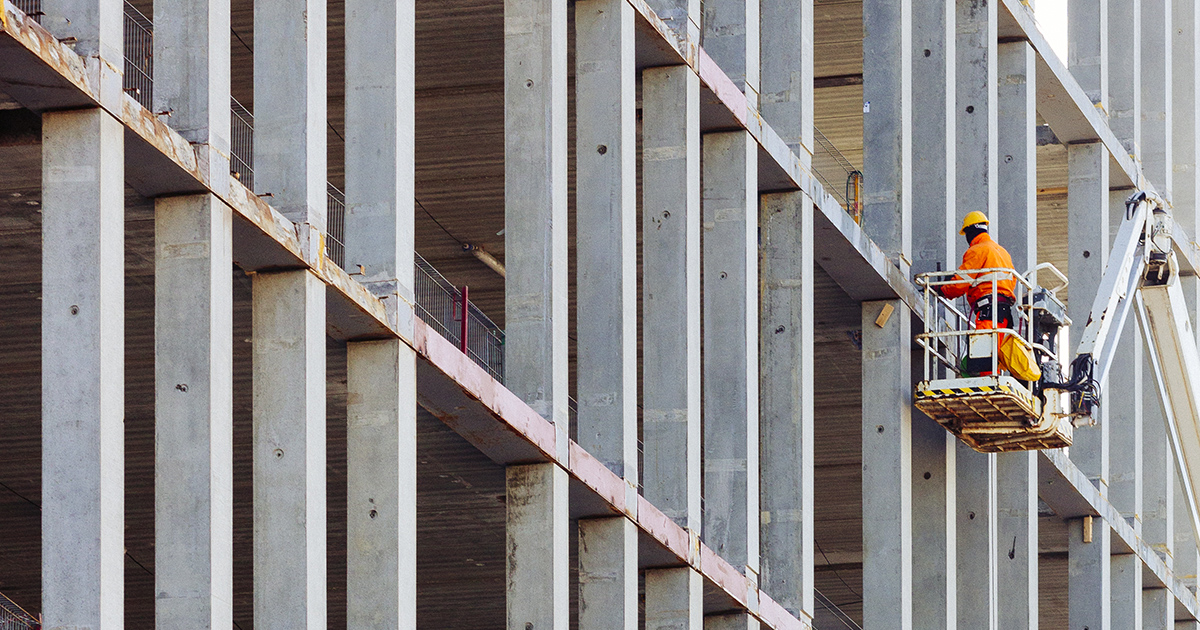
Sometimes it makes sense for real estate investors to build a new property from the ground up instead of competing to buy an existing income-producing property.
Building is likely the better choice when existing properties are trading at prices substantially (25% to 50%) above what it costs to build them. In this way, new development offers a type of optionality – delivering to real estate investors two alternative ways to access an allocation they seek – provided the investors have the skill set and know-how to execute on real estate construction. Here, we discuss the impact of adding development to a private real estate portfolio.
What are the risks of development?
When we at J.P. Morgan Asset Management (JPMAM) – and other institutional investors – underwrite new property investments, we require future returns for development deals to be higher than returns for existing properties that are already stabilized and producing income. After all, investors need to be paid more to develop because it can be a riskier endeavor. Some of these risks include uncertainty of construction costs, risk of delays and risk of finding tenants or residents once the property is complete (lease up risk).
But how much riskier is development?
JPMAM’s proprietary database of open-ended real estate fund performance allows us to compare the total return (equity multiple) and volatility of building vs. buying. Based on the results illustrated in the chart below, new construction appears to be attractive. Even during the global financial crisis in 2008, the value of our development properties did not decline any more than properties that were already stabilized. And, since the financial crisis, an investor would have experienced a return more than twice that of stabilized properties.
What has contributed to development’s performance?
Based on our historical data – which averages more than 300 property observations per quarter – developments offer the potential for outperformance without added downside volatility for several reasons, including:
- Yield cushion: Developments typically come with substantial cap rate (income yield) cushions over prevailing yields. So, if a real estate recession were to occur and prevailing cap rates were to rise, existing income-producing properties – which started at prevailing cap rates – would likely experience bigger price hits than under-construction properties with expected income yields remaining much higher than prevailing cap rates.
- Falling costs: In the event a real estate recession threatens and then arrives, construction labor and materials costs can be flat or can even decline. This may improve profitability substantially, as cost increases are generally built into our construction cost assumptions.
- State-of-the-art quality and new economy ready: When real estate recessions hit, higher-quality commercial and residential assets tend to see more stable occupancy as tenants and renters trade up during recessions. New, modern properties are more likely to attract the types of commercial tenants that demand more space.
Development experience and process helps deliver performance
Development is not necessarily a tool in every private real estate investor’s toolkit. And performance is heavily dependent on three drivers:
- Execution: It is critical for the investor to actively oversee all aspects of design, construction, marketing and leasing.
- Experience: There is no substitute for the expertise derived from realizing property capital improvements, including ground-up construction, building upgrades and tenant space improvements, across multiple real estate cycles.
- Risk mitigation: Properties must be developed with an eye toward risk mitigation in tenant market exposure and in construction execution.
In conclusion, as seen in JPMAM’s development property experience (as illustrated in the chart above), new property construction has delivered an equity multiple more than twice that of stabilized properties – with the same level of risk.
There are times when development is the best choice for adding a property to real estate portfolios. And investors with the ability to execute on real estate development can add advantageous optionality to their investment program.
With a 50+ year track record of managing core open-ended funds through seven real estate cycles, JPMAM is uniquely positioned to invest in real estate development strategies.




